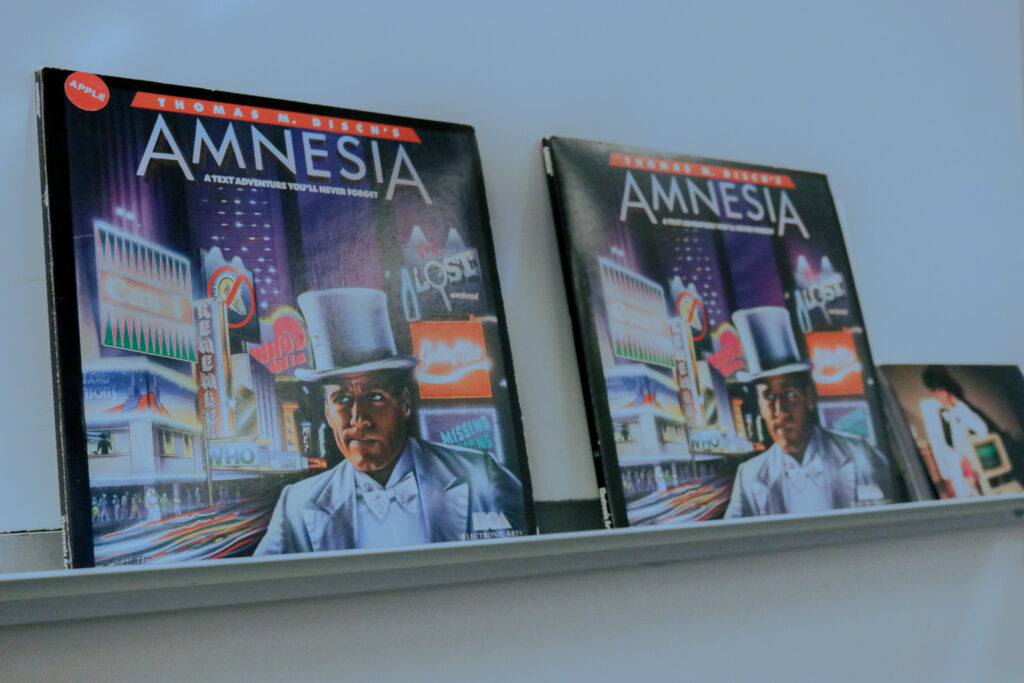Thirty-two digital technology and culture seniors have completed their restoration of the 1986 game, Amnesia, as part of their capstone course. The goal of the project was to prepare students for work after graduation, while under faculty guidance.
“No one can ever tell me that [the program is] not turning out thinkers, scholars,” Grigar said. “[They are] doing important work in media history, cultural history, literary history, art history.” – Dene Grigar
The Creative Media and Digital Culture Program, first founded in 1997, has become a booming success as it enters its 25th anniversary offering DTC classes for many students on campus. Through the major’s capstone requirement, also known as senior seminar, students in their fourth year are offered the chance to work for external organizations while using the university’s available tech-education resources. Dene Grigar, director of CMDC, said the objective of senior seminar is to transition students out of the classroom and into professional job settings.
“No one can ever tell me that [the program is] not turning out thinkers, scholars,” Grigar said. “[They are] doing important work in media history, cultural history, literary history, art history.”
Following the creation of the Macintosh computer in 1984, computer-based media began to increase in popularity. Being the only text-based adventure game published by Electronic Arts and written by Thomas Disch, Amnesia follows the story of a character who wakes up in a Manhattan hotel room with no clothes, money or recollection of his life. Players must then unravel the events that led up to his current state.
Selecting Amnesia as the restoration project for the DTC seniors commenced long before the fall semester started. The Electronic Literature Lab on campus, managed by Gri- gar, is known for housing the largest collection of interactive media in the world. The lab has also saved roughly 700 flash artworks since the termination of Adobe Flash Player in January 2020.
Through ELL’s reputation of restoring electronic works and connections made by Grigar, the program was granted access to Disch’s estate, who requested the students recreate the iconic EA video game.
At the start of the project, students were divided based on their academic interests and specialties, also deemed “Superpowers”, which include skills like game development, web development, design, video, animation and promotion.
Students began the project by studying the original 450- page manuscript written by Disch. According to Andrew Thompson, DTC major and the project’s manager, most of the written content was not included in the original game due to EA’s insufficient budget, therefore, students had to sift through existing material and choose elements that were critical to Amnesia’s plot.

(Rowan Segura/The VanCougar)
“The game had enough content to fit on six floppy disks, but they only published two because they didn’t have the budget to release that much.… Our job was to take the game and modernize it in some way so we can now release it for a public audience once again,” Thompson said. “And how we did that was up to us. So that’s when the class started.”
Thompson said he and his peers worked around 20 to 25 hours per week, and had accumulated 6,300 hours collectively, with a dedicated 1,700 hours from the six-person game development team.
Alongside their achievements in media history studies and game design, students also said it encouraged them to refine their communication and teamwork skills.
“You can teach design skills easier than you can teach people skills. Learning how to take feedback and give feedback without getting your feelings hurt and communicating was really vital for a work environment,” said Ceenan Calzadilla, a member of the web development team.
After completing the project, students obtained professional experience by presenting the game to a board of clients. Grigar said the DTC program has a 90% placement rate, as some students are graduating with jobs already set-in-stone, largely because of the capstone course’s overall success.
“I have seven students leaving the semester with jobs in hand before graduation day – before grades are even in,” Grigar said.
The DTC program’s restoration of Amnesia is available on their website at www.amnesia-restored.com. While the game’s project has come to a close, stay tuned for the Spring 2022 project as graduating seniors work on restoring another classic video game.

Andrew is a junior studying English and Digital Technology and Culture at WSU Vancouver.
